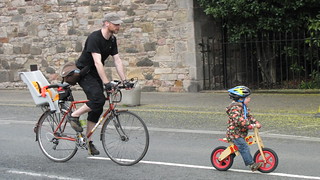"
Maria Popova (@brainpicker)
03/07/2012 01:40
Bike commuting by the numbers in the top U.S. bike-friendly cities – though, wow, dishearteningly low http://j.mp/NqC2E1
"
CityCyclingEdinburgh was launched on the 27th of October 2009 as "an experiment".
IT’S TRUE!
CCE is 16years old!
Well done to ALL posters
It soon became useful and entertaining. There are regular posters, people who add useful info occasionally and plenty more who drop by to watch. That's fine. If you want to add news/comments it's easy to register and become a member.
RULES No personal insults. No swearing.

"
Maria Popova (@brainpicker)
03/07/2012 01:40
Bike commuting by the numbers in the top U.S. bike-friendly cities – though, wow, dishearteningly low http://j.mp/NqC2E1
"
Toronto and Vancouver weren't US cities last time I checked.
To be fair, the blog says North American cities.....you can't expect Twitter users to think about what they're tweeting. ;-)
Interesting though that Portland is only 3.9%. Portland, the cycling nirvana of Norte Americano. Edinburgh, take a bow, our modal share trounces Portland! But, where is San Francisco? Or Berkeley? Surely these places all have reasonable cycling modal share?
Figures for California are quite impressive. No infographic with photo of hipster on a fixie though:
http://www.cyclelicio.us/2011/california-bicycle-mode-share/
I think there's a difference between modal share for commuting and for general use - I've seen some bemoan a city being lower than it "should" because cycle commuting wasn't big in the city, but everyday cycling was big.
Think about the demographics too - you could score well in commuting with fast, confident, on-road cyclists (insert usual stereotype here), but if children, parents and older folks (insert "indicator species" stereotype here) did their errands by bike it wouldn't impact your score, despite suggesting a much more cycle-friendly city.
Robert
Traffic planning in most cities is based on the congestion which in many places only manifests itself at peak commuting times. Therefore the commuting modal share is an important indicator.
Of course, a high proportion (40% +?) of car journeys are for leisure purposes, so the planning model doesn't really factor in overall usage of cars either. Hence flawed practices such as bus and cycle lanes only operating during peak times...
You must log in to post.

 Cycling in Edinburgh Flickr group
Cycling in Edinburgh Flickr group
Video embedded using Easy Video Embed plugin